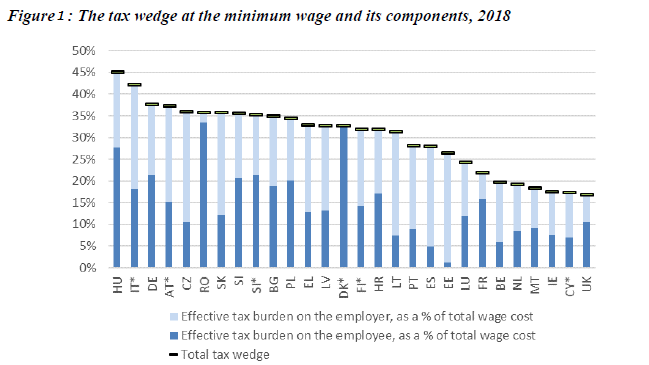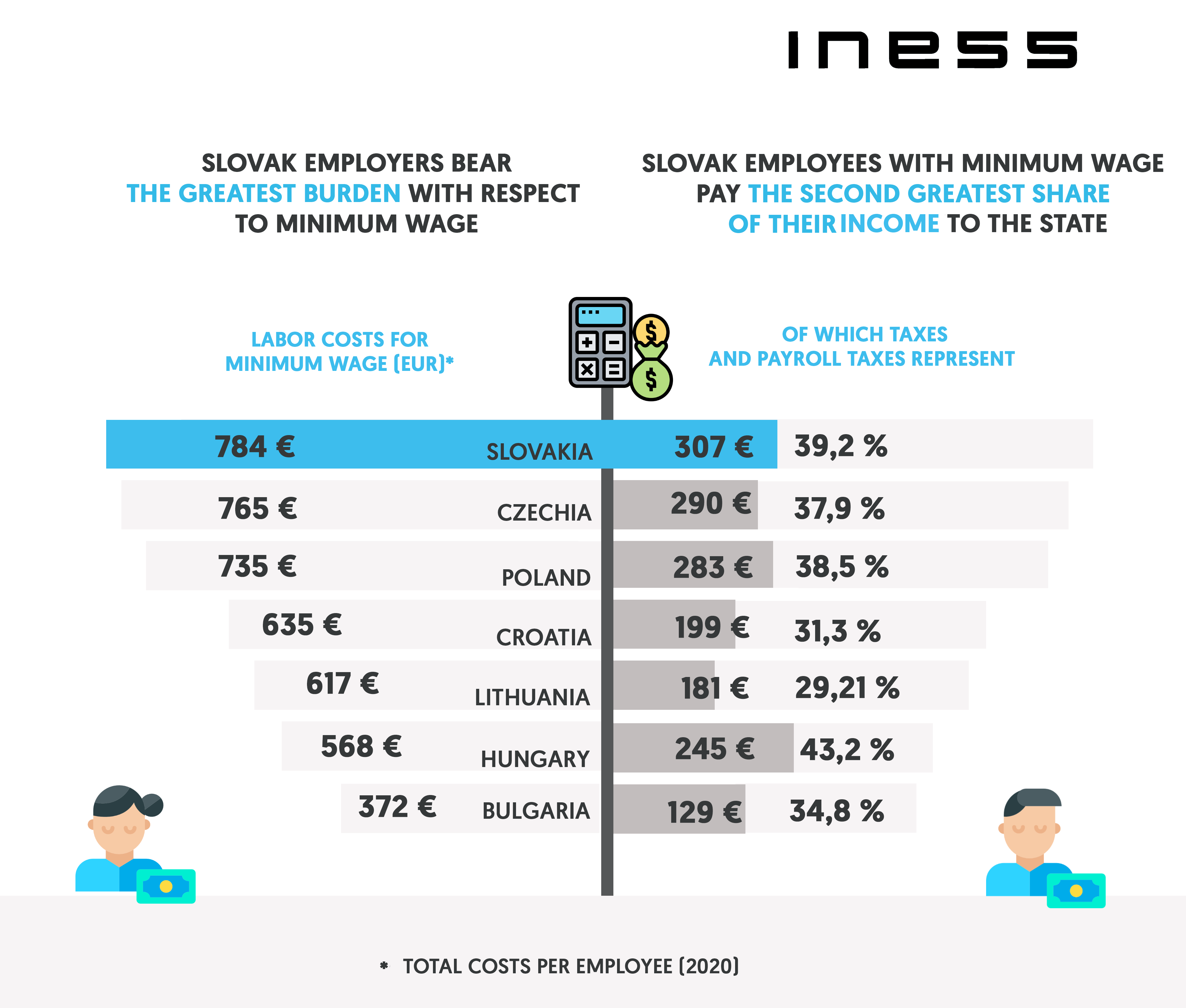The current Vice-President of the European Commission Mr. Timmermans openly says that a minimum wage of 60% of the median wage should be paid in the European Union. In addition, the European Commission launched consultations with trade unions and employers on EU minimum wage rules in January.
Let’s put aside the question whether it is achievable for now. Paradoxically, for minimum wage in Slovakia this may lead to its lowering.
The current share on median wage is 63%. Over the course of past six years, the governments in Slovakia have approved growth of minimum wage by 47.7%, which is twice the rate of growth of the average wage (23.9%). This rapid increase of minimum wage makes Slovak employers to face the greatest wage costs for minimum-wage employees from selected countries.
All this is happening in the times when Slovakia is troubled by deep regional differences. On the one hand, it is true that there are regions with a 2-3% unemployment rate, but, at the same time, there are also the ones where the unemployment rate is around 15%.
In these regions, tenths of unemployed people are waiting for one job vacancy. In addition, these are the regions where the share of the minimum wage to the median wage is close to 80%.
People who have been unemployed for a long-term period are also a great issue in Slovakia. Their share in the total unemployment is 60%, which is two times more than in neighbouring countries (Hungary 35%, the Czech Republic 32%, and Poland 22%).
In regard to this indicator, Slovakia is the second in the EU, running close to the southern countries (Greece 65%, Italy 54%).
However, the issue is not only the minimum wage itself, but also the burden of taxes and contributions. While six years ago an employee with minimum wage paid 29% on taxes and contributions from the total costs of labour, this year, it is 39.2%.
Slovak employees then pay the second greatest share from their reward for work to the state from the selected countries. This implies that from high wage costs of employers, Slovak employees get a relatively smaller proportion in contrast with their colleagues in neighbouring countries.
For comparison with other countries of the EU, consult the chart with the 2018 data:
 Source: https://ec.europa.eu/social/BlobServlet?docId=22219&langId=en
Source: https://ec.europa.eu/social/BlobServlet?docId=22219&langId=en
Continue exploring:




